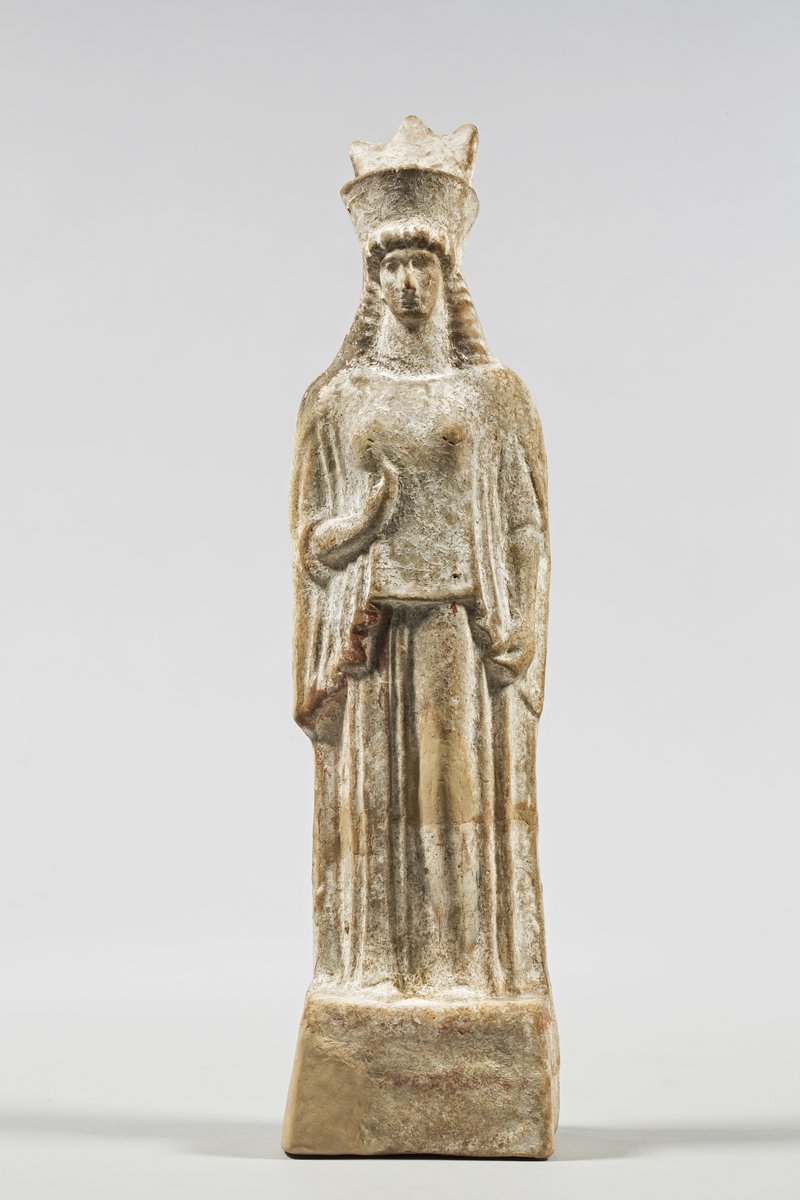
Standing Goddess
Classical Antiquities
| Date | late 1st century – first half of the 2nd century AD |
|---|---|
| Object type | lamp |
| Medium, technique | moulded, terracotta |
| Dimensions | height: 2.3 cm; length: 7.4 cm |
| Inventory number | 50.1146 |
| Collection | Classical Antiquities |
| On view | This artwork is not on display |
The circular oil lamp stands on a low pedestal, its shoulders are adorned with an egg pattern and its plate (discus) is decorated with a relief scene. the body has two openings: a small hole in the plate was used to pour in the oil, while the burner hole at the end of the nose was used to feed out the wick, dipped in oil. The potter did not make the lantern on a potter’s wheel, but with the help of two negative moulds of terracotta or plaster, into which he pressed the clay and then fitted the upper and lower parts together.
Oil lamps were perhaps the most common type of object from the Roman period, produced in large quantities and in series, in a wide variety of shapes. The discus was often decorated with a scene from everyday life or from the world of myths. This piece shows a two-figure composition of a dog attacking a fleeing stag.
In the Roman Imperial era, hunting was a favourite pastime of the elite, but it also played an important role in military training, so it is no surprise that its depiction was popular in the art of the era. Oil lamps feature depictions of wild animals (lion, boar, deer, hare) and hounds, sometimes alone and sometimes during the chase. The hunter himself is less frequently shown; when he does appear, it is often as a character from a mythical hunting story (such as Artemis or Meleager).
Csaba Bodnár
This record is subject to revision due to ongoing research.